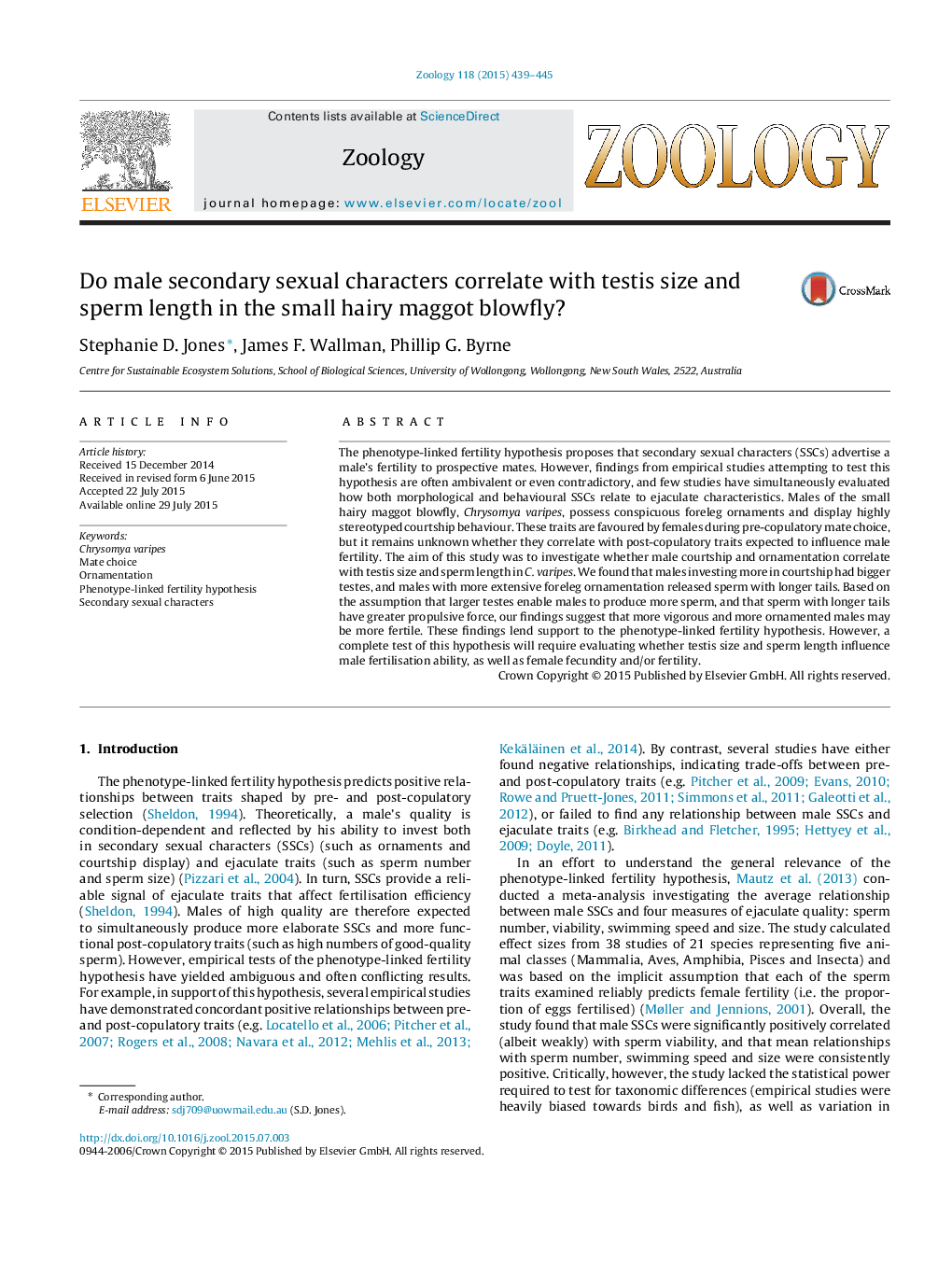| Article ID | Journal | Published Year | Pages | File Type |
|---|---|---|---|---|
| 2791035 | Zoology | 2015 | 7 Pages |
•We investigated the correlation of male courtship and ornamentation with testis size and sperm length in Chrysomya varipes.•Males that courted females more intensively had bigger testes.•Males with more ornamentation on their forelegs had sperm with longer tails.•Males that invest more in courtship and ornaments are assumed to be more fertile.•These findings lend support to the phenotype-linked fertility hypothesis.
The phenotype-linked fertility hypothesis proposes that secondary sexual characters (SSCs) advertise a male's fertility to prospective mates. However, findings from empirical studies attempting to test this hypothesis are often ambivalent or even contradictory, and few studies have simultaneously evaluated how both morphological and behavioural SSCs relate to ejaculate characteristics. Males of the small hairy maggot blowfly, Chrysomya varipes, possess conspicuous foreleg ornaments and display highly stereotyped courtship behaviour. These traits are favoured by females during pre-copulatory mate choice, but it remains unknown whether they correlate with post-copulatory traits expected to influence male fertility. The aim of this study was to investigate whether male courtship and ornamentation correlate with testis size and sperm length in C. varipes. We found that males investing more in courtship had bigger testes, and males with more extensive foreleg ornamentation released sperm with longer tails. Based on the assumption that larger testes enable males to produce more sperm, and that sperm with longer tails have greater propulsive force, our findings suggest that more vigorous and more ornamented males may be more fertile. These findings lend support to the phenotype-linked fertility hypothesis. However, a complete test of this hypothesis will require evaluating whether testis size and sperm length influence male fertilisation ability, as well as female fecundity and/or fertility.
